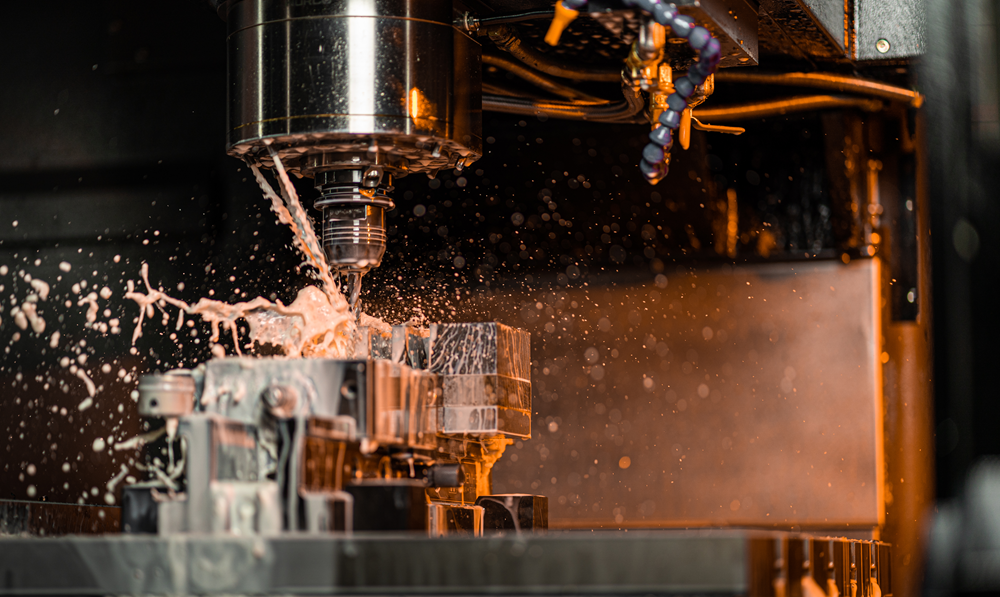Sump life is a critical metric to improve for any shop that wants to conserve coolant and reduce downtime. However, basic fluid maintenance protocols like optimizing concentration only take sump life so far.
Implementing metalworking fluid recycling systems is key to maximizing the life of every gallon — and in some cases, even extending it indefinitely. But before deciding to make an investment in these tools, you need to know if metalworking fluid recycling is right for your operation, as well as the pros and cons of these systems.
What is metalworking fluid recycling?
Metalworking fluid recycling is the practice of reclaiming fluid from the sump and removing contaminants like dirt, tramp oil, and metal chips to restore their performance and dramatically extend their life.
Metalworking fluid recycling systems separate these contaminants from the fluid and allow it to return to the sump in like-new condition. Metalworking fluid recycling systems accomplish purification through a variety of mediums, and many machines are designed to target specific contaminants. Common systems include the following:
- Sump vacuum and filtration systems allow users to remove metalworking fluid from the sump and run it through a filter, removing particulate matter, metal chips, and other solids.
- Skimmers and coalescers continuously collect tramp oil on rotating belts and in external tanks to remove it from the fluid before it emulsifies.
- Centrifuges use high speeds to separate pure coolant from emulsified tramp oil, and both large and small contaminants. Many centrifuges can remove particulate matter as small as 2 microns in size.
The Downside to Metalworking Fluid Recycling
If you’re curious about metalworking fluid recycling, it’s important to be aware of the upfront cost. Different systems vary widely in price and some may qualify as a major capital expenditure. Even basic sump vacuum and filtration systems can cost a minimum of a few thousand dollars. It can take up to a year to recoup the investment in fluid savings and improved efficiency.
Before making the investment, you also need to be prepared to allocate the necessary labor resources. Depending on the size of your operation, the number of machines being serviced, and the specific metalworking fluid recycling system being implemented, you often need at least one full-time employee to manage fluid maintenance and oversee recycling processes.
The Benefits of Metalworking Fluid Recycling
Aside from these few notable downsides, investing in cutting fluid recycling equipment brings far greater and more comprehensive benefits than the initial cost.
Saves Labor Time and Resources
By extending sump life and performance quality, metalworking fluid recycling systems minimize the need for fluid changeouts, reducing machine downtime and maximizing productivity. Fully automated central recycling systems that filter fluids on a continuous basis can virtually eliminate downtime, except for periodic sump cleaning.
Reduces Coolant Spending
Recycling systems dramatically extend fluid life, significantly delaying the need to purchase more cutting fluid to replenish the sump. Over the course of a year, this can result in significant savings, especially for companies that typically consume a high volume of fluid. One aerospace manufacturer was able to reduce their coolant consumption by 43-48% in a year after installing a central XYBEX® fluid recycling system, resulting in over $150,000 in annual savings.
Reduces Disposal Costs
Less fluid waste automatically reduces the costs of chemical disposal and hauling coolant away from your plant. Depending on how long you’re able to extend coolant life, this benefit could nearly eliminate an entire budget line item, further contributing to annual cost savings. One hard-disc manufacturer was able to reduce disposal costs by 80% simply by investing in a recycling system and reducing coolant expenditures.
Lower Impact
More frequent metalworking fluid disposal also exposes your company to the liabilities that come from working with industrial waste. Due to the EPA’s cradle-to-grave policy, companies that produce industrial waste are responsible for its environmental impact throughout its entire lifecycle. If a disposal truck gets into an accident while transporting your waste, both your company’s finances and reputation could be on the line.
Improves Sustainability Profile
Reducing cutting fluid consumption doesn’t just save money; it also plays a direct role in minimizing the environmental impact of your operation and establishing your company as more eco-friendly and sustainable. Implementing a recycling system can kick off a social responsibility program or contribute meaningfully to already established waste reduction goals.
Is metalworking fluid recycling right for you?
Investing in metalworking fluid recycling systems can take significant resources at the beginning, but it’s possible to quickly recover ROI, while long-term cost savings and efficiency gains last the entire life of the equipment. But what’s more important than implementing fluid recycling is partnering with the right equipment supplier.
Master Fluid Solutions pioneered the practice of fluid conservation, inventing the first recycling system in the 1970s. To this day, XYBEX recycling systems remain the industry-leading solutions for metalworking fluid recycling. Schedule a site visit so our team can assess your operation’s needs.

